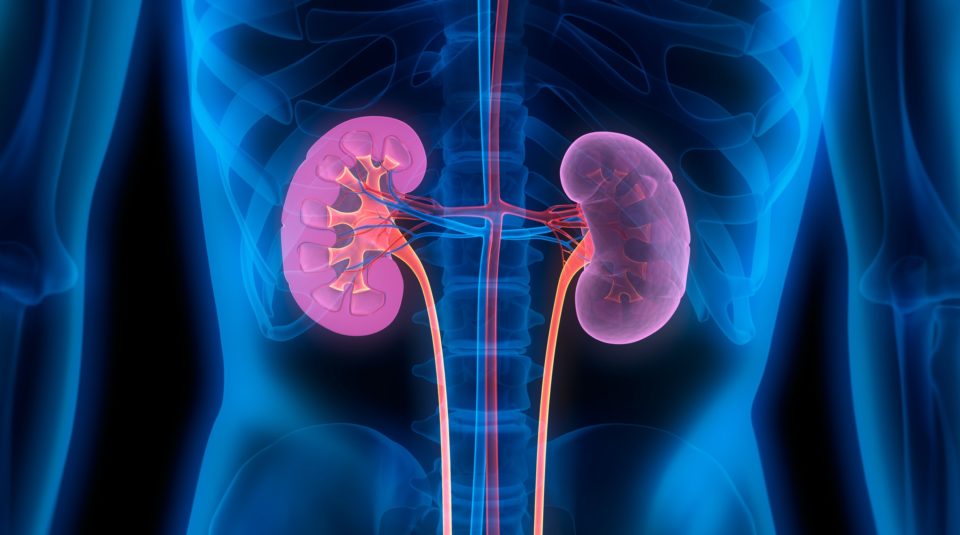
Worldwide, immunoglobulin A nephropathy (IgAN) is the most common primary glomerular disease and a major cause of kidney failure requiring renal replacement therapy (RRT). The most common presentation of IgAN is hematuria; approximately 70% to 100% of patients have microscopic hematuria. However, there is some controversy regarding the role of hematuria disease progression.
In some studies, microhematuria has been shown to be a risk factor for progression of kidney disease, while others suggested that there was no association between microhematuria and the risk for kidney failure. A small study in China found a strong association between time-averaged hematuria during follow-up, using a standard urine sediment analysis in one center, and poor renal prognosis. Gui-shen Yu, PhD, and colleagues conducted a retrospective cohort study to examine the association of hematuria and progression of IgAN. Results of the study were reported in the American Journal of Kidney Diseases [2020;76(1):90-99].
The cohort included 1333 patients with IgAN who were treated at a Chinese referral hospital. Median follow-up was 45 months. Microhematuria was evaluated in fresh urine using a fully automated urine particle analyzer (automated method) and urine sediment examination by a skilled examiner (manual method). Hematuria was characterized as a time-varying attribute, i.e., average hematuria level was calculated for every 6-month period for each patient during follow-up. Remission was defined as average red blood cell (RBC) count ≤5 per high-power field (HPF) using the manual method or ≤28 RBC per mL using the automated method during the first 6 months of follow-up.
The outcome of interest was a composite event of 50% decline in estimated glomerular filtration rate (eGFR) or development of kidney failure.
During follow-up, participants had 429 automated urine examinations per 100 person-years and 457 per 100 person-years using the manual method. The Oxford classification was not performed in 29 patients with fewer than eight glomeruli on kidney biopsy.
At baseline, 50.64% of the participants were men (n=675) and mean age was 35.07 years. Median eGFR was 82.2 mL/min/1.73 m2, median protein excretion was 1.31 g/d, and mean arterial pressure (MAP) was 93.73 mm Hg. At baseline, 645 patients were hypertensive. Initial hematuria was 12.50 RBC/HPF using the manual method and 97.60 RBC/mL using the automated method. A total of 375 patients were recorded as having a history of microscopic hematuria. The distributions of M1, E1, S1, T1-T2, and C1-C2 were 39.88%, 33.05%, 62.27%, 34.51%, and 58.67%, respectively.
During the 45 months of follow-up, time-averaged hematuria was 11.31 RBC.HPF using the manual method and 68.66 RBC/mL using the automated method. For time-averaged proteinuria, median protein excretion was 0.86 g/d. Overall, 207 patients reached the composite kidney disease progression event, including 123 kidney failure events.
The two techniques for hematuria (manual and automated) displayed a strong and statistically significant linear correlation (r=0.948; P<.001). The conversion coefficient between the two methods was 5.6. Using the manual method, hematuria remission was defined ≤5 RBC/HPF; using the automated method, remission was defined as ≤28 RBC/mL.
During the first 6 months, there were 253 patients with ≤28 RBC/mL. Those patients showed a higher prevalence of hypertension, and lower prevalence of M1, E1, S1, C1, and C2 lesions. Using the Oxford classification, there was no significant difference in the prevalence of T lesions.
A total of 639 patients received steroids and/or other immunosuppressive agents. In the group with immunosuppressive therapy, patients had more hematuria at baseline compared with the untreated group (median values of 117.55 vs 81.20 RBC/mL; P<.001). Time-averaged hematuria during follow-up was similar between the treated and untreated groups.
In cause-specific hazards models, following adjustment for age, sex, time-varying proteinuria, time-varying MAP, baseline eGFR, use of steroids or other immunosuppression agents, and Oxford classification, time-varying hematuria using the automated method was an independent risk factor for the composite outcome of kidney disease progression (hazard ratio [HR], 1.46; 95% confidence interval [CI], 1.13-1.87; P=.003). When hematuria was measured using the manual method, results were similar (HR, 1.46; 95% CI, 1.15-1,86; P=.002).
During the first 6 months, 12.3% (n=31) of patients in the hematuria remission group and 16.3% (n=176) of those in the nonremission group reached the composite kidney disease progression event (P=.01). There was a significant association between hematuria remission and reduced risk for the composite event (HR, 0.41; 95% CI, 0.28-0.61; P<.001).
In patients without proteinuria remission (protein excretion >1.0 g/d) during the first 6 months, there was significant reduction in the risk for the composite kidney disease progression event when hematuria remission during the first 6 months was treated as a time-varying covariate (HR, 0.46; 95% CI, 0.32-0.68; P<.001). There was no association between hematuria remission during the first 6 months and improved kidney survival in patients with proteinuria remission (HR, 0.64; 95% CI, 0.31-1.29; P=.2).
There were some limitations to the study cited by the authors, including the single-center design with a single ethnicity, the possibility of time-varying confounding, and not directly evaluating the predictive value of reductions in hematuria.
In conclusion, the researchers said, “In this large cohort study, we confirmed that the extent of microhematuria during follow-up was independently associated with kidney disease progression in IgAN, suggesting it should be included in the risk scoring system for predicting renal outcomes of IgAN. Hematuria remission significantly reduced the incidence of kidney disease progression events. Importantly, we found this effect much greater in patients without proteinuria remission, for whom hematuria remission during therapy may reduce the risk for kidney failure. These findings may help inform clinical management decisions. Hematuria evaluated using the fresh urine automated method had similar associations with renal outcomes as those evaluated using the manual urine sediment method. When it is confirmed as a standard and rapid method, the fresh urine automated method should be considered for IgAN clinical practice in the future.”
Takeaway Points
- Hematuria is the most common presentation of immunoglobulin A nephropathy (IgAN). Researchers in China conducted a retrospective cohort study to examine the association between hematuria and progression of kidney disease.
- The study utilized two methods to evaluate microhematuria: (1) a fully automated urine particle analyzer (automated method) and (2) urine sediment examination by a skilled examiner (manual method).
- There was an independent association between level of hematuria and progression of kidney disease; remission of hematuria was associated with improved kidney outcomes in IgAN in patients with persistent proteinuria. Associations with outcomes were similar with the two evaluation methods.







 © 2025 Mashup Media, LLC, a Formedics Property. All Rights Reserved.
© 2025 Mashup Media, LLC, a Formedics Property. All Rights Reserved.